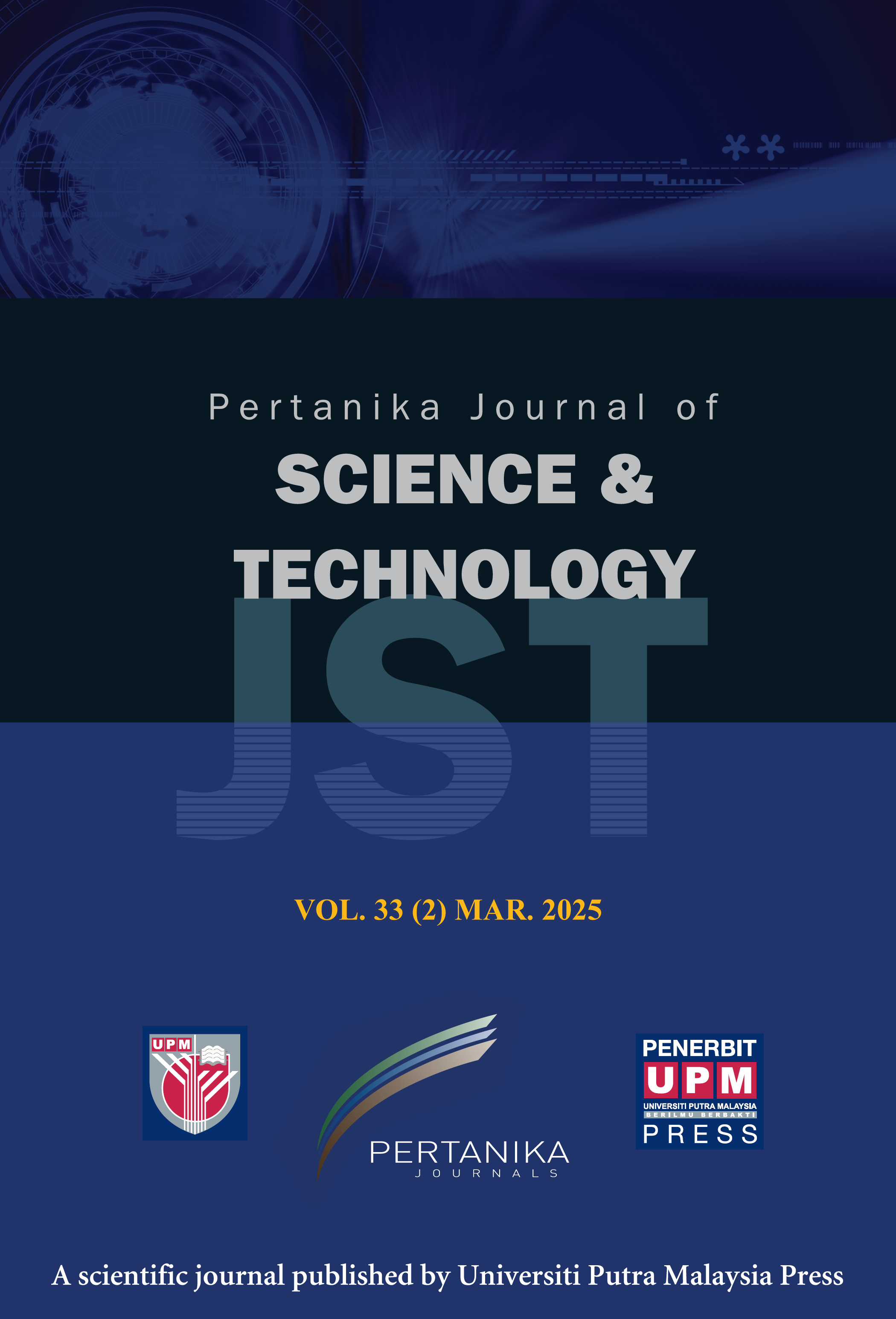PERTANIKA JOURNAL OF SCIENCE AND TECHNOLOGY
e-ISSN 2231-8526
ISSN 0128-7680
Extraction and Characterisation of Natural Fibres from Pennisetum purpureum: Influence of Harvesting Age on Chemical, Mechanical, and Thermal Properties
Mohd Fairus Kayat, Ridhwan Jumaidin, Mastura Mohamad Taha and Fahmi Asyadi Md Yusof
Pertanika Journal of Science & Technology, Pre-Press
DOI: https://doi.org/10.47836/pjst.33.6.04
Keywords: Cellulose, crystallinity index, mechanical properties, Pennisetum purpureum fibre, scanning electron microscopy, thermogravimetric analysis, X-ray diffraction
Published: 2025-09-25
This study examined new bio-based, natural cellulosic fibres from the Pennisetum purpureum plant, determining the optimal harvesting age at 30, 45, and 60 days for the first time. The fibres were extracted using a water-retting process and investigated for their potential as reinforcement materials in polymer composites. The characterisation process involved analysing the fibre’s chemical composition, as well as its physical, thermal, mechanical, crystallinity, and morphological properties. Chemical composition was determined using standard chemical analysis, while mechanical properties were evaluated through tensile testing. X-ray diffraction (XRD) was used to assess the fibre’s crystallinity, and thermogravimetric analysis (TGA) measured thermal stability. Additionally, scanning electron microscopy (SEM) was employed to study the fibre’s surface morphology. The results indicated that mechanical properties were influenced by the ratio of cellulose to lignin. At 30 days, the fibre achieved optimal mechanical performance due to an elevated lignin concentration counteracting reduced cellulose levels (tensile strength: 67.54 MPa, modulus: 3.14 GPa, cellulose: 35.61%, lignin: 16.47%). This highlights that optimal fibre performance depends on the interaction of chemical constituents rather than cellulose content alone. XRD analysis revealed that the crystallinity index of P. purpureum fibres was 51.19, 49.40, and 50.56% for 30-, 45-, and 60-day fibres, respectively, with the highest value at 30 days, suggesting better molecular organisation due to reduced amorphous components. Thermogravimetric analysis showed that fibre age affected thermal degradation, with older fibres exhibiting greater hemicellulose breakdown and improved thermal stability. The 45-day fibre had the lowest moisture loss (4.78%) and the highest char residue (28.54%), indicating better thermal resistance than the 30- and 60-day fibres. The main weight loss due to cellulose and hemicellulose decomposition occurred between 276–390°C, with the 60-day fibre showing a slightly higher peak degradation temperature (390°C), suggesting a more structured cellulose composition. SEM analysis revealed that the fibre surface was perforated and coarse, with a central lumen, further supporting its potential as a reinforcing material in thermoplastic green composites. This indicated that P. purpureum fibre has strong potential as a reinforcing material for thermoplastic green composites.
ISSN 0128-7702
e-ISSN 2231-8534
Share this article

